Magnets of the New APS Storage Ring
Each of the 1,321 magnets that make up the new storage ring has a specific purpose. Most are named after the number of magnetic poles they contain – dipoles have two, quadrupoles four, etc. Click the sections below to find out more about these magnets and how they create ultrabright X-rays at the APS.
Swipe to see whole image.

Longitudinal Gradient Bending Magnets (colored red)
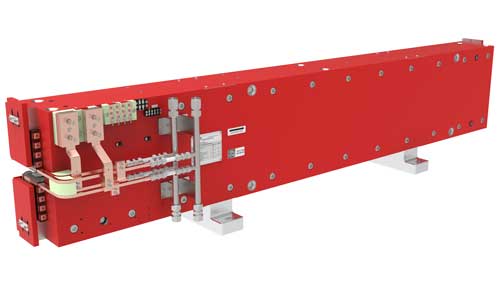
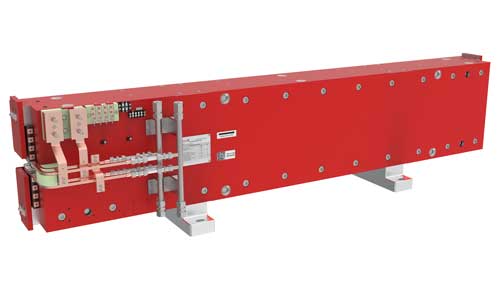
These long, slim dipole magnets – four in all per sector of the storage ring – are called “Longitudinal gradient” or L-bend magnets. Their job is to bend the beam, allowing it to travel 360 degrees around the ring. The bulk of the bending comes from these dipoles, of which there are 160 in total. As the name suggests, the magnetic field from one end of the magnet to the other changes, which helps reduce the emittance of the beam. The goal is to get the emittance of the electron beam as low as possible, packing lots of energy into a tiny space.
Transverse Gradient Dipoles (colored red)
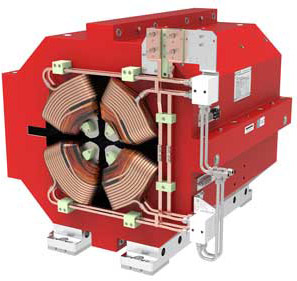
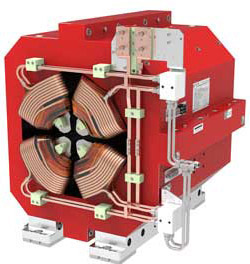
There are three of these magnets in the center of each sector. These magnets are designed with four poles instead of two, although they are also considered dipoles. This allows them to serve two functions at the same time – focus the electron beam to a lower emittance using a quadrupole-like field and also bend it around the track just as the M1 and M2 dipoles do. To get a lower-emittance electron beam, the trick is to bend it in small increments and focus it in between bends. This keeps the beam tight. Since the dipole field strength varies across the aperture, these are called the “transverse gradient dipoles” or Q-bends.
Reverse Bending Transverse-Gradient Dipoles (colored purple)
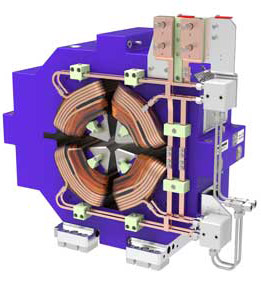

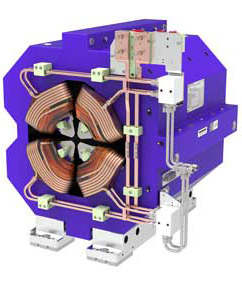
These magnets are similar to the M3 and M4 magnets in the sense that they also serve the dual function of focusing the beam and help to bend it around the ring. However, their primary task is focusing with only a small amount of bending. In fact they bend the electron beam outwards, while the other magnets bend it inwards. This helps to reduce emittance even further.
Quadrupoles (colored blue)
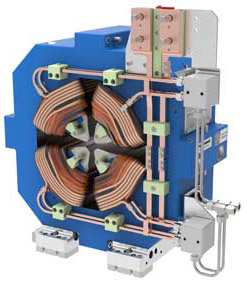
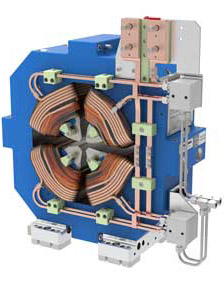



These are all different variations of quadrupole magnet with four poles each, but they all serve the same function: they focus the electron beam to keep the emittance low, without bending the overall beam off its path. These different variations of essentially the same design provide adequate focusing strength as needed for various locations around the ring.
Sextupoles (colored yellow)

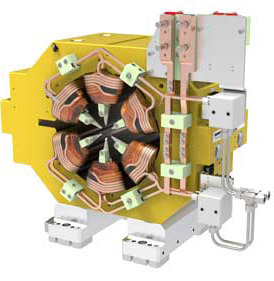
These six-pole magnets have a specific function: to compensate for slightly different focusing experienced by particles of different energies in the electron beam. Some electrons have slightly higher energies than others, so they get focused by the quadrupoles slightly differently depending on their energy level, resulting in a somewhat diffuse focus. The sextupoles provide a varying amount of focusing across their aperture, bringing particles of different energies together in a cohesive beam.
8-Pole Correctors (colored orange)

The 8-pole correctors are special types of magnets that can produce three different types of magnetic fields which can be changed very quickly (up to several thousand times a second). As it circulates, the electron beam moves slightly out of position because of vibrations or ripple in power supplies, which is detrimental to overall performance. This movement is detected by monitors around the ring. The monitors feed that information to the corrector magnets, which then use different magnetic fields to move the beam back into position.
Undulators
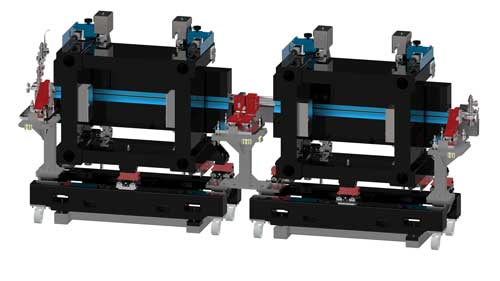
The undulators are the magnets that cause the electron beam to emit high-brightness X-ray beams. They do this by moving the electron beam in a zig-zag pattern very quickly, with sharp bends in the beam. At each bend, the electrons release photons, and at high accelerations, those photons form bright, directional high-energy X-ray beams. Scientists then use those beams to peer inside materials and learn more about their samples.
CLICK HERE for an overview on the new storage ring.
